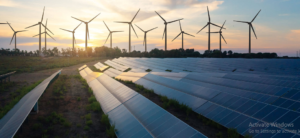As the awareness of climate change has increased, any reduction in fossil fuels seems to be essential with the use of renewable energies. This change could bring into reality a sustainable and clean energy future. Many countries the world over are working on various renewable approaches like solar, wind, and hydroelectricity, among others, to reduce emissions with minimum environmental harm.
From traditional sources to renewable resources, it is a long and convoluted path; rather, an absolute necessity. Two main doorways to such transition are technological innovation and policy. This new paradigm in energy will go a long way in making societies environmentally safe, creating new jobs, and stimulating economic growth.
Understanding the pathways to a cleaner future is important to us all. In making this transition – as individuals and as communities – we are helping to ensure a healthy planet for our children and their children.
Key Takeaways
- Transitioning to renewable energy is one of the key pathways in fighting climate change.
- Effective energy transitions require innovations and policy.
- Everyone has a role in shaping a clean energy future.
Evolving Energy Paradigms
Energy consumption has dramatically changed over time. These changes not only help to understand current trends but also the future of energy.
History of Energy Consumption
Humans had to rely on only two sources of energy for several millennia: biomass and wind. Firewood was the most common source of energy in ancient times. The Industrial Revolution replaced firewood with coal, which became the major source of energy during the 18th and 19th centuries.
As the steam engine was developed, great demands for coal emerged. In the 20th century, oil and natural gas started to supplant coal in many countries. Modern conveniences such as automobiles and electricity drove the transition.
Today, a majority of global energy uses is taken by fossil fuel sources. It thus follows that understanding the path to that position takes a lot of importance as society seeks to transition toward cleaner energy sources.
The Rise of Renewable Energy
Renewable energy has picked up immense momentum lately. Solar, wind, hydro, and geothermal sources have been gaining momentum with improved technology. The cost of solar panels and wind turbines has reduced over the years and thus have become more affordable.
Countries are taking more interest in renewable energies. For instance, Germany’s initiative of Energiewende is into a shift towards clean energy. Similarly, China has invested highly in solar power and is currently leading in the industry.
By 2024, the world’s generation of electricity with renewables is around 30% and continues to rise as more and more individuals and governments come to appreciate its value.
Environmental Imperatives
The environmental impacts of fossil fuels are grave. Air pollution, climate change, and the depletion of the natural habitat are serious issues linked to traditional sources of energy.
Combustion of fossil fuel results in injurious emissions into the atmosphere that have great implication on public health and the natural environment. A shift in energy use to cleaner fuels would be beneficial to reduce these effects.
Global agreements, such as the Paris Accord, have reached the need to lower greenhouse gas emissions. Countries are setting up more stringent regulations to favor renewable energy use.
Investment in renewable energy provides partial answers to urgent environmental problems, with the aim of securing a sustainable future.
Paths to a Sustainable Future
The transition to clean energy will involve technological advancements, supporting policies, and an economic overview. Each factor is a basic building block in the movement of society to a future that is sustainable.
Advancement in Clean Energy Technology
Clean energy technologies keep on advancing at incredible rates. It is attaining efficiency and lower costs relative to wind, solar, and hydroelectric power. Such technologies include solar panels, which have greatly declined in cost over the previous ten years.
The technology for battery storage is also getting better. Advanced batteries permit better storage of energy, thus making renewable sources of energy more dependable. In other words, energy collected on a sunny day or a windy day can be reserved and utilized later.
Another important area is smart grids. Advanced electrical grids promote the distribution and demand management of energy efficiently. They can integrate many renewable sources together for a robust energy system.
Policy and Regulatory Frameworks
Supportive policy is very key towards changing over to clean energy. The governments can give incentives to the investments in renewable energy. Tax credits and subsidies are granted to encourage businesses to make use of cleaner technologies.
Regulatory frameworks also have to adjust. Included within this is a setting of renewable energy targets and setting standards on emissions. Crystal clear regulations spur on cleaner behavior and innovation in energy solutions.
International agreements, for example, the Paris Agreement, galvanize national action. They galvanize countries into pledging to slice their greenhouse gas emissions. It calls for collaboration among countries in terms of the available technologies and best practices.
Economic and Social Aspects
There is economic dividends in moving to the future sustainably. A good investment in renewable energies opens jobs in manufacturing, installation, and maintenance of those jobs. These are very significant jobs for communities needing stable employment.
But many hurdles need to be crossed. Workers in the fossil fuel industries do stand to lose their jobs, and retraining programs would be needed for those workers to find their places in clean energy.
Another dimension is that of social equity: all communities are entitled to equal clean energy resources. Investments must necessarily be made toward underprivileged areas rather than increasing the gap.

Also Read :
- Innovations in Renewable Energy: What’s Next for Green Technology?
- The Role of Solar, Wind, and Hydropower in a Sustainable Future
- Breaking Down the Basics: How Renewable Energy Works
- Harnessing the Power of Nature: The Future of Renewable Energy
- Top 10 Emerging Technologies in 2024: A Comprehensive Guide
